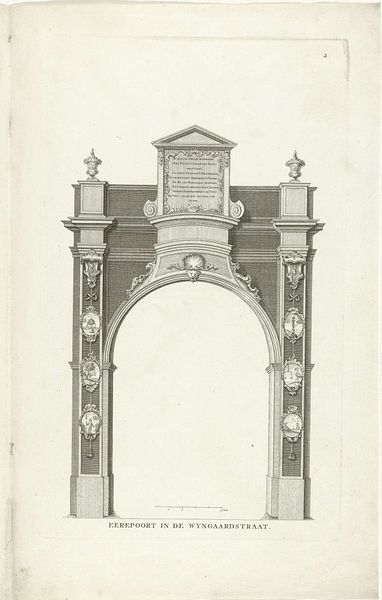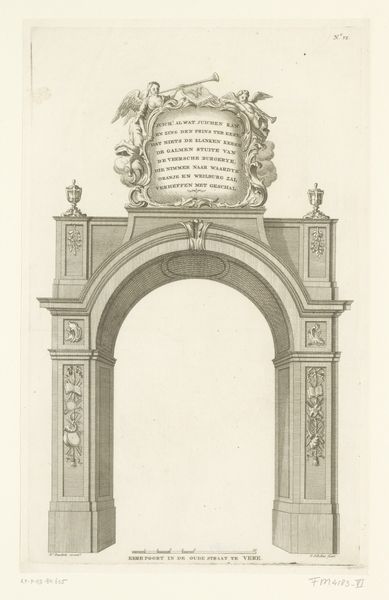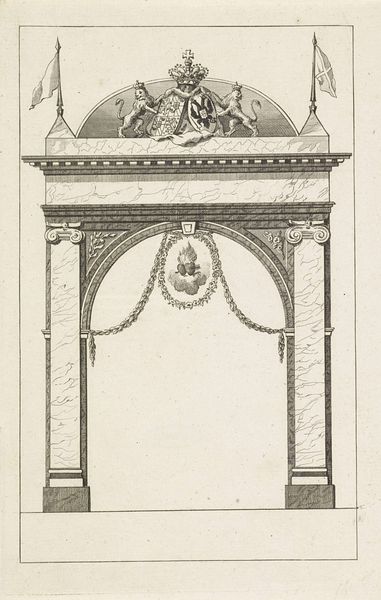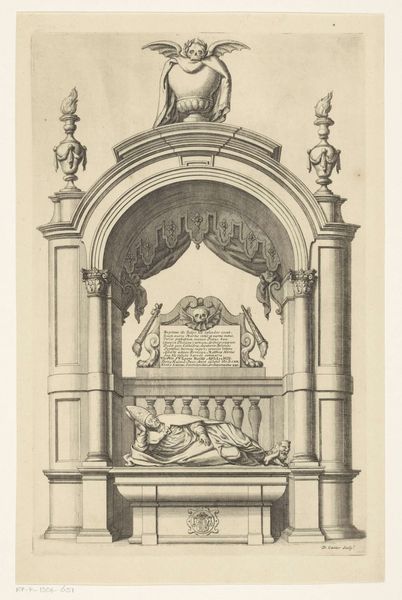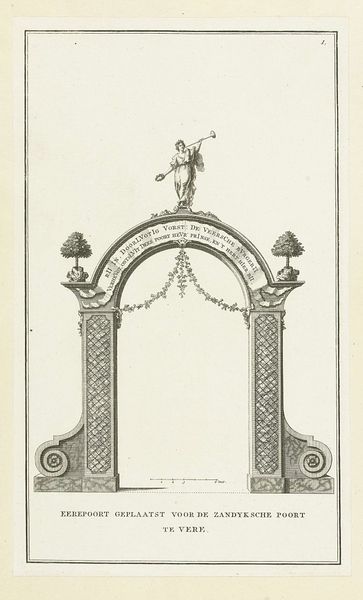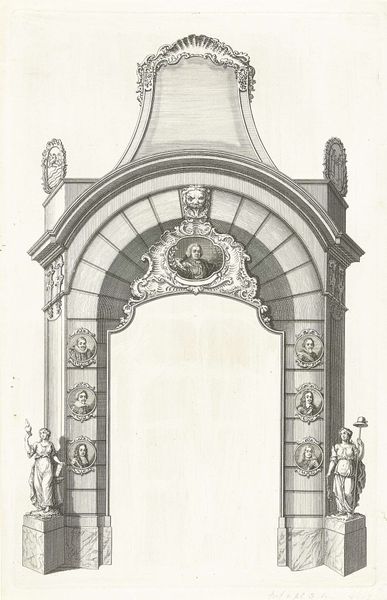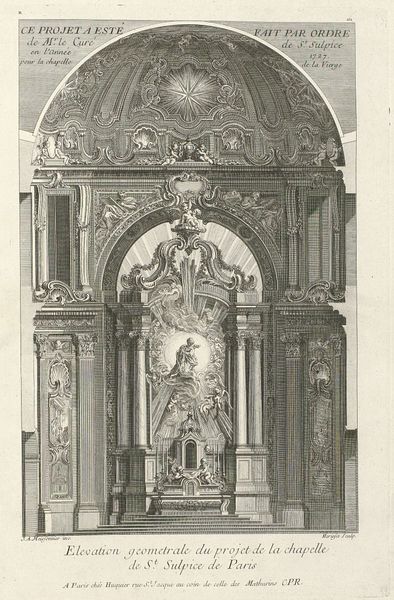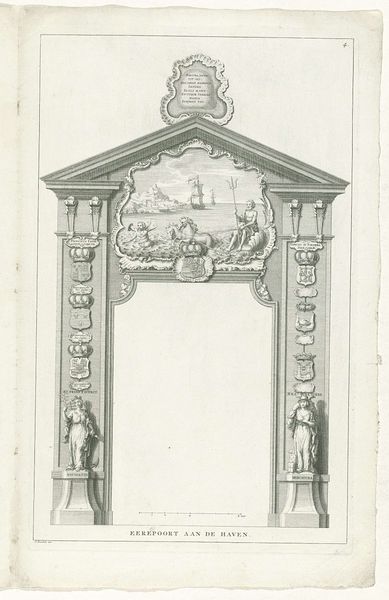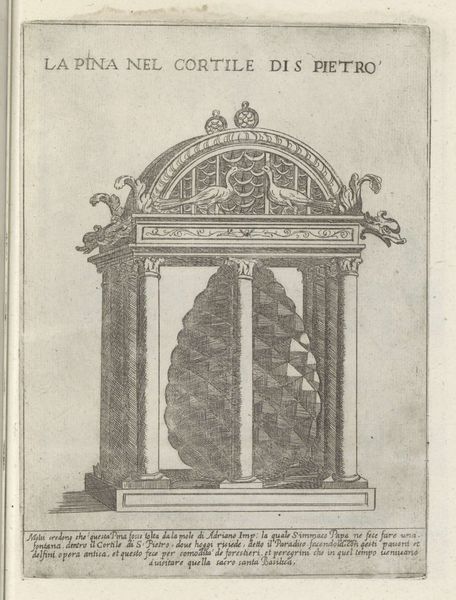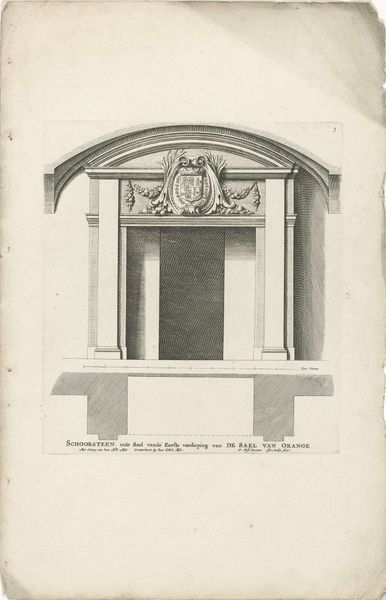
print, engraving, architecture
#
narrative-art
#
baroque
#
dutch-golden-age
# print
#
landscape
#
form
#
line
#
history-painting
#
engraving
#
architecture
Dimensions: height 377 mm, width 238 mm
Copyright: Rijks Museum: Open Domain
Curator: Philips's engraving from 1751, titled "Erepoort in de Korte Oudestraat," is remarkable in its architectural precision, showcasing the visual language of Baroque triumphal arches in the Netherlands. Editor: There’s a kind of dreamlike clarity to it, isn't there? It feels like gazing at an idea of an arch, a portal, rather than an arch itself. Almost floating there in the parchment. Curator: It's more than a study of form. Commemorative arches, then and now, are assertions of power and visual manifestations of victory. This print reminds us of the deeply rooted historical context shaping the built environment. Editor: The figures feel allegorical, don't they? One poised above with a trumpet and then a child with the same horn on the right of it...It's almost like a celestial echo reverberating through stone and then the city around it. Curator: Absolutely. And note the decorative trophies, and inscriptions. This print is from the Dutch Golden Age when the Dutch Republic was a global force. Commemorative monuments reinforced national identity. Philips, in his engraving, is engaging in this construction. The inscriptions and other adornments solidify what these structures mean beyond merely letting people pass from one place to another. Editor: What do you think the modern context of looking at this piece now offers viewers? Do you think our generation, or the younger set behind us, interpret things differently than viewers even twenty years ago? I find this to be very appealing even now. It transcends the specific historical markers in the carving for me, even though those are incredibly vital, I am sure. Curator: Perspective is always shifting. The legacy of Dutch colonialism warrants critique as viewers engage with artworks that once celebrated such dominion. Our role is to encourage a critical perspective toward these images. What seems visually interesting or historically relevant, might be entirely oppressive to someone else. Editor: Exactly. To bring that to a visual language that we can use now—what symbols have survived over centuries, why have they lasted and been given prominence? It's worth noting... Curator: Agreed, thinking about visual literacy for future generations—that is powerful food for thought. Editor: For sure. Well, that about wraps it up! Thanks for the deep dive, this has been delightful!
Comments
No comments
Be the first to comment and join the conversation on the ultimate creative platform.
